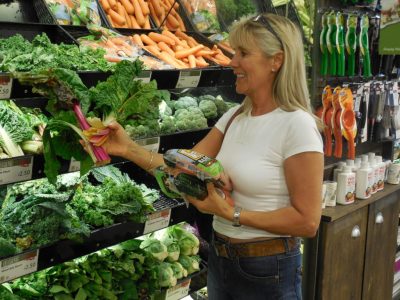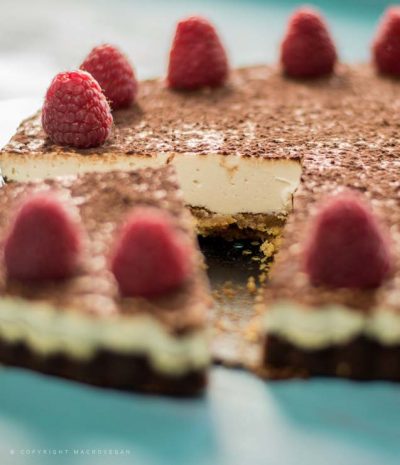On-Line Nutrition Course

MACROVegan Nutrition Course
Food, Health and Human Ecology
MACROVegan Online Nutrition Course is a unique and in-depth exploration of modern day nutrition from international teacher, author and health counsellor Bill Tara. If you are looking for a certificate program to add to your professional skills as a Nutritional Health Coach or simply wish to deepen your understanding of the confusion that surrounds nutrition, this course will fill your needs. The course examines our food choices and shows how they impact not only our personal health but social and environmental health as well.
A short introduction to our on line course - Please view this short introductory video that will give you an insight into the personal story from Bill Tara that led him to teaching thousands of students world-wide during the past 50 years.
In this second short video here Bill will share with you the content and outline of what you will study.
My part in the course will have you all cooking up dishes in your kitchen like a professional chef. First and foremost, what we feed our bodies reflect on our day to day health and wellbeing. A naturally balanced diet is like healthy soil. When our bodies are properly nourished, the quality of our blood is sound, and the cells function in a normal way. In the KITCHEN with Marlene is where health and healing begins. The 60 recipes within the course are split into six categories.
10 Soups
10 Grains & Beans
10 Pasta/Noodles/Lighter Bowls
10 Vegetables & Sea Vegetables
10 Sauces, Dressings & Dips
10 Desserts
We look forward to working with many of you world-wide. To share our passion towards creating a healthy world for all humans and non-humans alike has been our mission and vision for decades. For immediate download you can purchase the course here from our MACROVegan Shop
There is no time-frame for completion of the course. Take as long as you like, we are here to guide and inspire you. Certification is available on completion of all the modules. We connect with all our students on our facebook discussion board page daily to answer questions and upload new material.
In good health
Reading Food Labels To Avoid Toxic Ingredients

Reading Food Labels To Avoid Toxic Ingredients
When you go shopping, your first stop should be at the colourful aisle that is stocked with wonderful seasonal fruits and vegetables.
In this produce section, choose a wide variety of fresh fruit and vegetables – these are naturally low in fat, sodium and rich in cholesterol-lowering fibre. You can also choose frozen fruits and vegetables to have as a stand-by when there are times that you simply need something quick. If you buy ‘simple’ frozen vegetables without any sauces, they can be better choices than cans because they eliminate salt and that’s a must to control blood pressure and manage heart disease. When purchasing canned goods choose brands with no-added-salt.
Following a MACROVegan lifestyle means avoiding all animal foods to limit the amount of saturated fat, that’s the fat that comes from animals and hardens our organs. Be very careful to avoid trans fats, check the labels if it says partially hydrogenated or hydrogenated it contains trans fats. Trans fats can be found naturally at low levels in some foods, such as those from animals, including meat and dairy products. Artificial Trans fats can be formed when oil goes through a process called hydrogenation, which hardens the oil.
This type of fat, known as hydrogenated fat, can be used for frying or as an ingredient in processed foods. Much smaller amounts of artificial trans fats can also be made when oils are refined to make them fit to eat. Artificial Trans fats can be found in some processed foods such as biscuits and cakes where they are sometimes used to help give products a longer shelf life. Please also be aware of using products with Palm Oil. The industry is linked to major issues such as deforestation, habitat degradation, climate change, animal cruelty and indigenous rights abuses in the countries where it is produced, as the land and forests must be cleared for the development of the oil palm plantations.
Focus on plant-based protein like all sorts of beans and lentils, tofu, tempeh, seitan. These foods are fantastic sources of soluble fibre, not only to keep your digestive tract working well but also to combat cholesterol!
The colourful bins with an array of wholegrain such as short grain brown rice, wild rice, millet, quinoa, in golden and in red, buckwheat, and so much more are the mainstay of our diet. They provide us with long-lasting energy every day and don’t mess with our blood sugar, so make sure to stock up on these amazing grains.
For breakfast use wholegrain porridge or oatmeal which are excellent choices but if you are a cereal lover look for ones that have wholegrain and fibre with no sugar or make your own. When you start to read labels you will be surprised at what is actually in all those beautifully packaged ‘healthy’ breakfast cereals. There is only one brand of cornflakes that we can find that is sweetened with barley malt. Incredible eh!
There are many delicious breakfast recipe ideas on our MACROVegan you tube channel and in my book ‘Macrobiotics for all Seasons’ available world wide on amazon or as a download with my delicious Cooklets on our MACROVegan Shop.
In good health
Marlene's 60th Vegan Birthday Cake

Marlene's 60th Vegan Birthday Cake
Black & White Chocolate Cake
I created this recipe for my mum's 90th birthday cake. Everyone loved it, so much so, it has now become the family's birthday cake. Unfortunately, I had to make my own.!!!
The crunchy base texture contrasts with the creamy top, to make this sumptuous cake irresistible
Oat or Quinoa Nut Crust
1 cup oat or quinoa flour
2 cups pecans
¼ cup brown rice syrup
1 tbsp. coconut oil
2 tbsp. maple or coconut sugar
3 tbsp. ground flax
½ tsp. ground cinnamon
½ tsp. sea salt
Preheat the oven to 175/350°. Put 2 cups pecans in a food processor and process until they start to clump and oils start to release. In a small saucepan melt the coconut oil with brown rice syrup, stirring all the time. Transfer the pecan mixture into a large bowl and mix with the rest of the ingredients. Using your hands, squeeze the dough over and over to combine. You should be able to form a ball with it. If it's too dry add a little water. Transfer the pecan dough into a 9” push-up fluted flan dish and smooth out evenly. Press down firmly with fingers, bringing it up along the sides pressing as firmly as you can. Prick the dough with a fork to make a cross. Bake for 9-12 minutes. Remove from the oven and allow to cool.
For the Cake Topping:
½ cup cacao butter
1½ cups cashew nuts, soaked overnight
1 cup almond milk
½ cup maple syrup or rice syrup
1 tbsp. vanilla extract
2 tbsp. lemon juice
Cacao powder for dusting
Drain the cashews and rinse in cold water. Melt the cocoa butter in a small saucepan, on a low heat. Pour into your blender. Add all the other ingredients and whizz until smooth. Pour over the cooled cake base. Sprinkle with cacao powder and place in the refrigerator. Once set, decorate with raspberries.
MACROVegan ChitChat
Cashews are used throughout the world, as paste base for curries in India and Sri Lanka, as whole nuts in Thailand and China, and brewed as sweeteners in Spanish and South American desserts. Add them to chocolates and cakes. Please ensure you purchase fair-trade organic cashews grown using sustainable farming practices such as biodiversity and multi-cropping.
In good health



